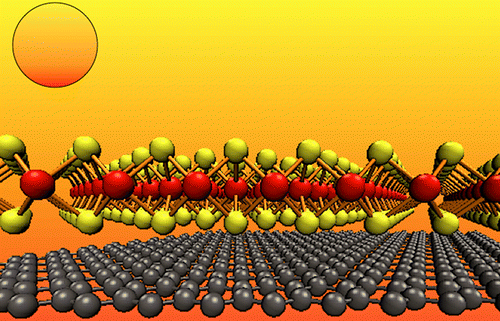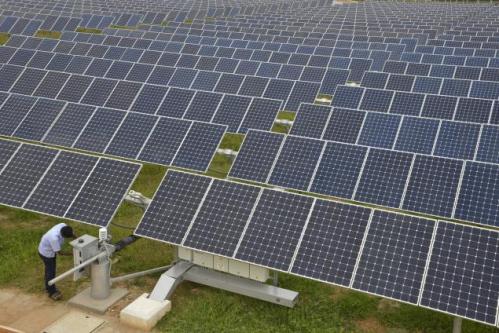Categories: Featured Articles » Interesting electrical news
Number of views: 9161
Comments on the article: 1
Ultra-thin multilayer solar cells based on nanostructured materials
 Scientists all over the world are paying great attention to improving solar energy conversion systems. In an effort to increase their efficiency and reduce, as much as possible, the cost of direct production of solar panels, scientists at the Massachusetts Institute of Technology decided to take the path of reducing the thickness of solar cells.
Scientists all over the world are paying great attention to improving solar energy conversion systems. In an effort to increase their efficiency and reduce, as much as possible, the cost of direct production of solar panels, scientists at the Massachusetts Institute of Technology decided to take the path of reducing the thickness of solar cells.
The new type of panels can surpass any such solutions, and in terms of electricity production per kilogram of material used, it will be inferior only to uranium. Such panels can be made of sheets folded into many layers. graphene or molybdenum disulfide, the thickness of which is only one molecule (stacks of monomolecular sheets). Scientists argue that this approach will ultimately become the best possible approach to the development of solar energy.
Jeffrey Grossman, an assistant professor of energy at the Massachusetts Institute of Technology, says that despite a lot of attention from scientists researching two-dimensional materials like graphene, the potential of these materials for use in solar converter systems has been completely overlooked in recent years. It turned out that these materials are not just good, but they are very good at coping with the task assigned to them.

In the long run, two layers one atom thick, as presented to the Grossman team, will give an efficiency of 1-2%, converting the energy of sunlight into electricity. It seems small compared to 15-20% efficiency traditional silicon elements, however, it is important to remember that the result is achieved by using materials thousands of times thinner than tissue paper.
A two-layer battery with a thickness of 1 nanometer is hundreds of thousands of times thinner than a conventional silicon one, therefore, by laying these thinnest sheets in many layers, you can significantly increase and exceed the usual efficiency of solar cells. This will create significant competition for well-established technology, according to the co-authors of Grossman.

Where weight is critical, such as in spacecraft, in aviation, and in areas of the developing world where transportation costs are significant, such light elements already have great potential.
Compared by weight, the new solar panels will produce up to 1000 times more energy than conventional batteries. At the same time, the thinnest of the conventional technology produced to date solar cells still exceeds the new ones by 50 times in weight.
This is not only the ease of transportation, but also the ease of installation of the panels, because half the cost of today's solar panels is the cost of the supporting structure and the connection and control system. These costs can be greatly reduced by using lighter designs.
In addition, the material itself is much cheaper than silicon of the required purity, which is used in standard solar cells, because the sheets are so thin that they require a very small amount of starting materials.

This is an impressive example of how nanostructured materials can be the basis for designing the latest energy devices. The mechanical strength and flexibility of these thin layers are also expected to be high. Developers say this is only the beginning of a new generation of materials for solar energy.
On the one hand, molybdenum disulfide and molybdenum dislenide used in this project are only two of the many two-dimensional materials that could potentially be used here, not to mention their various combinations for use together.
Researchers believe that many materials have to be studied, and the conditions for reflection have already been created. Scientists can now look at these materials in a completely new way.
And, although there are currently no industrial methods for producing molybdenum disulfide and molybdenum dislenide, this is an area of active research. Manufacturability is a significant issue, but this problem is solvable.
An additional advantage of such materials is their long-term stability even in the open air, while other solar materials require protective coating with heavy layers of glass, which is also expensive. In fact, there is resistance to exposure to both ultraviolet light and moisture, and this makes the new solution very reliable.
Preliminary work included only computer modeling of materials, but now a group of scientists makes attempts to manufacture the devices themselves. Of course, this is only the tip of the iceberg, from the point of view of using two-dimensional materials to produce "clean energy", scientists say.
See also at bgv.electricianexp.com
:
